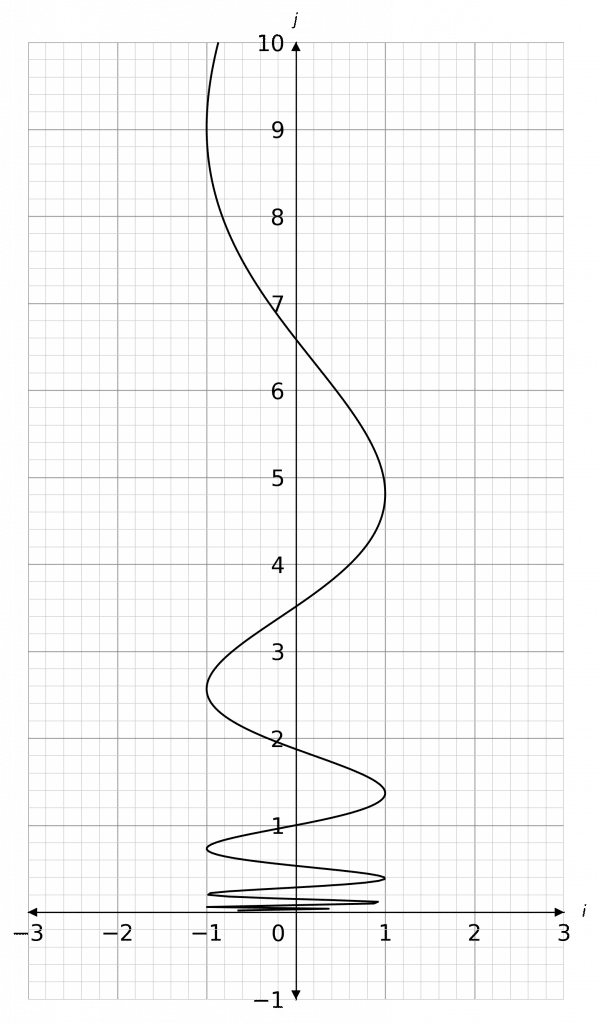Vectors in Mechanics
Vectors in Mechanics Revision
Vectors in Mechanics
In Resolving Forces, we mentioned how the components of a force can be described in vector form. We can do the same for equations of motion.
Make sure you are happy with the following topics before continuing.
Using SUVAT
We can use SUVAT more or less in the usual way, but we need to be careful of which equations we choose to use. Adapting the equations for vector form, we have
\textcolor{red}{v} = u + \textcolor{blue}{a}\textcolor{purple}{t} \to \begin{pmatrix}\textcolor{red}{v_1} \\\textcolor{red}{v_2} \end{pmatrix} = \begin{pmatrix}u_1 \\u_2 \end{pmatrix} + \begin{pmatrix}\textcolor{blue}{a_1} \\\textcolor{blue}{a_2} \end{pmatrix}\textcolor{purple}{t}
\textcolor{limegreen}{s} = u\textcolor{purple}{t} + \dfrac{1}{2}\textcolor{blue}{a}\textcolor{purple}{t}^2 \to \begin{pmatrix}\textcolor{limegreen}{s_1} \\\textcolor{limegreen}{s_2} \end{pmatrix} = \begin{pmatrix}u_1 \\u_2 \end{pmatrix}\textcolor{purple}{t} + \dfrac{1}{2}\begin{pmatrix}\textcolor{blue}{a_1} \\\textcolor{blue}{a_2} \end{pmatrix}\textcolor{purple}{t}^2
\textcolor{limegreen}{s} = \dfrac{1}{2}(u + \textcolor{red}{v})\textcolor{purple}{t} \to \begin{pmatrix}\textcolor{limegreen}{s_1} \\\textcolor{limegreen}{s_2} \end{pmatrix} = \dfrac{1}{2}\left( \begin{pmatrix}u_1 \\u_2 \end{pmatrix} + \begin{pmatrix}\textcolor{red}{v_1} \\\textcolor{red}{v_2} \end{pmatrix}\right) \textcolor{purple}{t}
\textcolor{limegreen}{s} = \textcolor{red}{v}\textcolor{purple}{t} - \dfrac{1}{2}\textcolor{blue}{a}\textcolor{purple}{t}^2 \to \begin{pmatrix}\textcolor{limegreen}{s_1} \\\textcolor{limegreen}{s_2} \end{pmatrix} = \begin{pmatrix}\textcolor{red}{v_1} \\\textcolor{red}{v_2} \end{pmatrix}\textcolor{purple}{t} - \dfrac{1}{2}\begin{pmatrix}\textcolor{blue}{a_1} \\\textcolor{blue}{a_2} \end{pmatrix}\textcolor{purple}{t}^2
Of course, we can extend that to n dimensions, but this is just in 2D form, to demonstrate the idea. We might also demonstrate the vector in \textbf{i}, \textbf{j} and further components.
You might notice that \textcolor{red}{v}^2 = u^2 + 2\textcolor{blue}{a}\textcolor{limegreen}{s} has been removed…
Multiplying two vectors by each other, i.e. (\textcolor{red}{v}\cdot \textcolor{red}{v}), (u\cdot u), (\textcolor{blue}{a}\cdot \textcolor{limegreen}{s}) will not give us the solution we perhaps expect. But don’t worry about that, it’s not important for this section, anyway.
The point is, we can only use equations involving vector-by-scalar calculations. \textcolor{purple}{t} is our only scalar variable.
Using Non-Uniform Acceleration
Again, we just use integration and differentiation from the Non-Uniform Acceleration section in the same way. In vector form:
\begin{pmatrix}\textcolor{red}{v_1} \\\textcolor{red}{v_2} \end{pmatrix} = \dfrac{d\begin{pmatrix}\textcolor{limegreen}{s_1} \\\textcolor{limegreen}{s_2} \end{pmatrix}}{d\textcolor{purple}{t}}
\begin{pmatrix}\textcolor{blue}{a_1} \\\textcolor{blue}{a_2} \end{pmatrix} = \dfrac{d\begin{pmatrix}\textcolor{red}{v_1} \\\textcolor{red}{v_2} \end{pmatrix}}{d\textcolor{purple}{t}}
\begin{pmatrix}\textcolor{limegreen}{s_1} \\\textcolor{limegreen}{s_2} \end{pmatrix} = {\LARGE \int} \begin{pmatrix}\textcolor{red}{v_1} \\\textcolor{red}{v_2} \end{pmatrix} d\textcolor{purple}{t}
\begin{pmatrix}\textcolor{red}{v_1} \\\textcolor{red}{v_2} \end{pmatrix} = {\LARGE \int} \begin{pmatrix}\textcolor{blue}{a_1} \\\textcolor{blue}{a_2} \end{pmatrix} d\textcolor{purple}{t}
We can extend this to n dimensions, and demonstrate our vectors in \textbf{i}, \textbf{j} and further components, also.
Here, we simply differentiate and integrate each component separately.
Example 1: SUVAT
A particle has initial displacement \underline{s}_0 = \begin{pmatrix}3\\ 5\end{pmatrix}. Given that \underline{u} = \begin{pmatrix}1\\ -1\end{pmatrix} and \textcolor{blue}{\underline{a}} = \begin{pmatrix}\textcolor{blue}{0}\\ \textcolor{blue}{-2}\end{pmatrix}, find the displacement (in vector form) of the particle at time \textcolor{purple}{t} = \textcolor{purple}{4}.
[3 marks]
\textcolor{limegreen}{\underline{s}} = \underline{u}\textcolor{purple}{t} + \dfrac{1}{2}\textcolor{blue}{\underline{a}}\textcolor{purple}{t}^2 + \underline{s}_0
= \left( \begin{pmatrix}1\\ -1\end{pmatrix} \times \textcolor{purple}{4}\right) + \left( \dfrac{1}{2}\begin{pmatrix}\textcolor{blue}{0}\\ \textcolor{blue}{-2}\end{pmatrix} \times \textcolor{purple}{4}^{2}\right) + \begin{pmatrix}3\\ 5\end{pmatrix}
= \begin{pmatrix}4\\ -4\end{pmatrix} + \begin{pmatrix}0\\ -16\end{pmatrix} + \begin{pmatrix}3\\ 5\end{pmatrix} = \begin{pmatrix}7\\ -15\end{pmatrix}
Alternatively, we can work this out in \textbf{i} and \textbf{j} notation.
Let \underline{s}_0 = (3\textbf{i} + 5\textbf{j}), \underline{u} = (\textbf{i} - \textbf{j}) and \textcolor{blue}{\underline{a}} = \textcolor{blue}{-2\textbf{j}}
Then \textcolor{limegreen}{\underline{s}} = \textcolor{purple}{4}(\textbf{i} - \textbf{j}) + \dfrac{\textcolor{purple}{4}^2}{2}(\textcolor{blue}{-2\textbf{j}}) + (3\textbf{i} + 5\textbf{j}) = (\textcolor{limegreen}{7\textbf{i} - 15\textbf{j}})
Example 2: Non-Uniform Acceleration
A particle has acceleration \textcolor{blue}{\underline{a}} = (\textcolor{blue}{2t\textbf{i} + t^{2}\textbf{j}}). It is initially stationary at the point \underline{s}_0 = (3\textbf{i} + 3\textbf{j}). Find an expression for its displacement vector \textcolor{limegreen}{s}, at time \textcolor{purple}{t}.
[3 marks]
\begin{aligned}\textcolor{red}{\underline{v}} = \int \textcolor{blue}{\underline{a}} d\textcolor{purple}{t} = \int \begin{pmatrix}\textcolor{blue}{2t}\\ \textcolor{blue}{t^{2}}\end{pmatrix} d\textcolor{purple}{t} = \begin{pmatrix}\textcolor{red}{t^{2}}\\ \textcolor{red}{\dfrac{1}{3}t^{3}}\end{pmatrix} + \begin{pmatrix}0\\ 0 \end{pmatrix} = \begin{pmatrix}\textcolor{red}{t^{2}}\\ \textcolor{red}{\dfrac{1}{3}t^{3}}\end{pmatrix}\end{aligned}
\begin{aligned}\textcolor{limegreen}{\underline{s}} &= \int \textcolor{red}{\underline{v}} \textcolor{purple}{t} = \int \begin{pmatrix}\textcolor{red}{t^{2}}\\ \textcolor{red}{\dfrac{1}{3}t^{3}}\end{pmatrix} d\textcolor{purple}{t} = \begin{pmatrix}\textcolor{limegreen}{\dfrac{1}{3}t^{3}}\\[6pt] \textcolor{limegreen}{\dfrac{1}{12}t^{4}}\end{pmatrix} + \underline{s}_0\\[1.2em]&=\begin{pmatrix}\textcolor{limegreen}{\dfrac{1}{3}t^{3}}\\[6pt] \textcolor{limegreen}{\dfrac{1}{12}t^{4}}\end{pmatrix} + \begin{pmatrix}3\\ 3\end{pmatrix}\\[1.2em]&=\begin{pmatrix}\textcolor{limegreen}{\dfrac{1}{3}t^{3} + 3}\\[6pt] \textcolor{limegreen}{\dfrac{1}{12}t^{4} + 3}\end{pmatrix}\end{aligned}
In component form:
\begin{aligned}\textcolor{red}{\underline{v}} = \int \textcolor{blue}{\underline{a}} d\textcolor{purple}{t} = \int (\textcolor{blue}{2t\textbf{i} + t^{2}\textbf{j}}) d\textcolor{purple}{t} = \textcolor{red}{t^{2}\textbf{i} + \dfrac{1}{3}t^{3}\textbf{j}}\end{aligned}
\begin{aligned}\textcolor{limegreen}{\underline{s}} &= \int \textcolor{red}{\underline{v}} d\textcolor{purple}{t} = \int \left(\textcolor{red}{t^{2}\textbf{i} + \dfrac{1}{3}t^{3}\textbf{j}}\right) d\textcolor{purple}{t} = \textcolor{limegreen}{\dfrac{1}{3}t^{3}\textbf{i} + \dfrac{1}{12}t^{4}\textbf{j}} + \underline{s}_0\\[1.2em]&=\textcolor{limegreen}{\dfrac{1}{3}t^{3}\textbf{i} + \dfrac{1}{12}t^{4}\textbf{j}} + (3\textbf{i} + 3\textbf{j})\\[1.2em]&=\textcolor{limegreen}{\left(\dfrac{1}{3}t^{3} + 3\right) \textbf{i} + \left( \dfrac{1}{12}t^{4} + 3\right) \textbf{j}}\end{aligned}
Vectors in Mechanics Example Questions
Question 1: A particle has an initial velocity of (5\textbf{i} + \textbf{j}) and acceleration (0.3\textbf{i} + 0.4\textbf{j}). Find the particle’s velocity after 8\textbf{ s}.
[2 marks]
Use \underline{v} = \underline{u} + \underline{a}t to give
\underline{v} = (5\textbf{i} + \textbf{j}) + 8(0.3\textbf{i} + 0.4\textbf{j})
=\left( (5 + 2.4)\textbf{i} + (1 + 3.2)\textbf{j}\right)
= (7.4\textbf{i} + 4.2\textbf{j})
Question 2: A particle sets off from the origin with a velocity of \begin{pmatrix}t^3\\ 6t\end{pmatrix}. Find an expression for the displacement vector \underline{s} and the acceleration vector \underline{a}.
[4 marks]
\underline{a} = \dfrac{d\underline{v}}{dt} = \begin{pmatrix}3t^2\\ 6\end{pmatrix}
\underline{s} = \int \underline{v} dt = {\LARGE \int} \begin{pmatrix}t^3\\ 6t\end{pmatrix} = \begin{pmatrix}\dfrac{1}{4}t^4\\[6pt] 3t^2 \end{pmatrix} + \begin{pmatrix}0\\ 0 \end{pmatrix} = \begin{pmatrix}\dfrac{1}{4}t^4\\[6pt] 3t^2 \end{pmatrix}
Question 3: A particle’s displacement is modelled as \underline{s} = (\sin t \textbf{i} + e^{\frac{t}{5}}\textbf{j}).
Find an expression for the velocity and acceleration in terms of t.

[4 marks]
\underline{v} = \dfrac{d\underline{s}}{dt} = \left( \cos t\textbf{i} + \dfrac{1}{5}e^{\frac{t}{5}}\textbf{j}\right)\\
\underline{a} = \dfrac{d\underline{v}}{dt} = \left( -\sin t\textbf{i} + \dfrac{1}{25}e^{\frac{t}{5}}\textbf{j}\right)
You May Also Like...

MME Learning Portal
Online exams, practice questions and revision videos for every GCSE level 9-1 topic! No fees, no trial period, just totally free access to the UK’s best GCSE maths revision platform.







